Spanish immigration to puerto rico: Puerto rico colonial records • FamilySearch
Citizenship in Puerto Rico – Family History
By Nydia Hanna
Puerto Ricans are American citizens with an interesting socio-political history of nationality. Puerto Rico was an integral part of the Spanish Colonization in the 15th century and remained under Spanish rule until the Spanish-American War of 1898. The Treaty of Paris placed Puerto Rico under American control and it is still an unincorporated territory of the United States. After the war in 1898, the name of Puerto Rico was changed to Porto Rico and remained so until 1932. In Spanish, Puerto Rico means ‘rich port’.
Puerto Ricans born in Puerto Rico were under US law from 1898 until 1917 when the Jones Act made them natural-born US Citizens. Puerto Ricans who were born on the mainland of Spain or the Canary Islands had the opportunity during 1899 to 1900 to decide if they wanted to remain a citizen of Spain, or become a citizen of the United States. This document was called the Declaración de Nacionalidad and every head of the household born in Spain was required to sign, listing their family members and parents. These documents are wonderful for a genealogist because the Spanish citizen identified their birthplace in Spain. They are available at FamilySearch on microfilm.
These documents are wonderful for a genealogist because the Spanish citizen identified their birthplace in Spain. They are available at FamilySearch on microfilm.
In 1932, the Puerto Rican legislature approved changing the name of Porto Rico (an Americanization of the name) back to the original spelling of Puerto Rico. When examining documents in Puerto Rico during the years between 1899 and 1932, we can see the change in spelling. After 1932, most documents will use the spelling of Puerto Rico.
In the US census of 1910, 1920, 1930, 1935 and 1940 in Puerto Rico, the people of Puerto Rico are all citizens unless otherwise listed under the section identifying Alien or Naturalized citizens and their year of immigration and country of citizenship. The populace of Puerto Rico are a mix of many nationalities in addition to origins in Spain. The island welcomed waves of immigrants from Holland, Corsica, Italy, France, Germany and Ireland over the years and some of these families that came to Puerto Rico during the late 1800’s retained their European country citizenship. Foreigners residing in Puerto Rico between 1815 and 1845 requested permission to reside on the island, or to become a Spanish citizen, from the Spanish government. Some of these permission and naturalization records to become a Spanish citizen are available online at FamilySearch at “Puerto Rico Records of Foreign Residents, 1815-1845.”
Foreigners residing in Puerto Rico between 1815 and 1845 requested permission to reside on the island, or to become a Spanish citizen, from the Spanish government. Some of these permission and naturalization records to become a Spanish citizen are available online at FamilySearch at “Puerto Rico Records of Foreign Residents, 1815-1845.”
Vital records in Puerto Rico are styled in the Spanish format and offer hand written narratives of ancestors and their places of birth. Unlike most US documents, Puerto Rican birth documents usually list parents and grandparents. A grandparent from a different city or country is usually identified by birthplace. The Spanish phrase “natural de___” means that they were born in the city or country mentioned afterward. The Spanish phrase “vecino de ___” means that they currently live in the city or country mentioned afterward, but does not indicate that they were born in that city. Marriage and death records prior to the Americanization of the island of Puerto Rico were written in the Spanish narrative format. Unfortunately, after 1917, many cities in Puerto Rico followed the typed and shortened version of vital records.
Unfortunately, after 1917, many cities in Puerto Rico followed the typed and shortened version of vital records.
Related posts
Puerto Rico | History, Geography, & Points of Interest
flag of Puerto Rico
Audio File:
National anthem of Puerto Rico
See all media
- Head Of Government:
- Governor: Pedro R. Pierluisi
- Capital:
- San Juan
- Population:
- (2022 est.) 3,194,000
- Currency Exchange Rate:
- 1 US dollar equals 0.946 euro
- Head Of State:
- President of the United States: Joe Biden
See all facts & stats →
Top Questions
What is Puerto Rico?
Puerto Rico, officially Commonwealth of Puerto Rico, Spanish Estado Libre Asociado de Puerto Rico, is the self-governing island commonwealth of the West Indies, associated with the United States. The easternmost island of the Greater Antilles chain, it lies approximately 50 miles (80 km) east of the Dominican Republic, 40 miles (65 km) west of the Virgin Islands, and 1,000 miles (1,600 km) southeast of the U.S. state of Florida.
The easternmost island of the Greater Antilles chain, it lies approximately 50 miles (80 km) east of the Dominican Republic, 40 miles (65 km) west of the Virgin Islands, and 1,000 miles (1,600 km) southeast of the U.S. state of Florida.
Should Puerto Rico be granted U.S. statehood?
Whether Puerto Rico should be granted U.S. statehood is widely debated. Some argue that the residents of Puerto Rico (who are American citizens) are treated like second-class people and that denying them statehood is a racist and hypocritical partisan ploy by conservatives to withhold voting rights to about 3.1 million voters. Others argue that Puerto Rico was never intended to be a U.S. state and that granting it statehood is a partisan ploy by liberals to unfairly gain more voters for the passage of legislation that the majority of Americans reject and which can’t win approval under existing laws. For more on the statehood debate, visit ProCon.org.
Summary
Read a brief summary of this topic
Puerto Rico, officially Commonwealth of Puerto Rico, Spanish Estado Libre Asociado de Puerto Rico, self-governing island commonwealth of the West Indies, associated with the United States.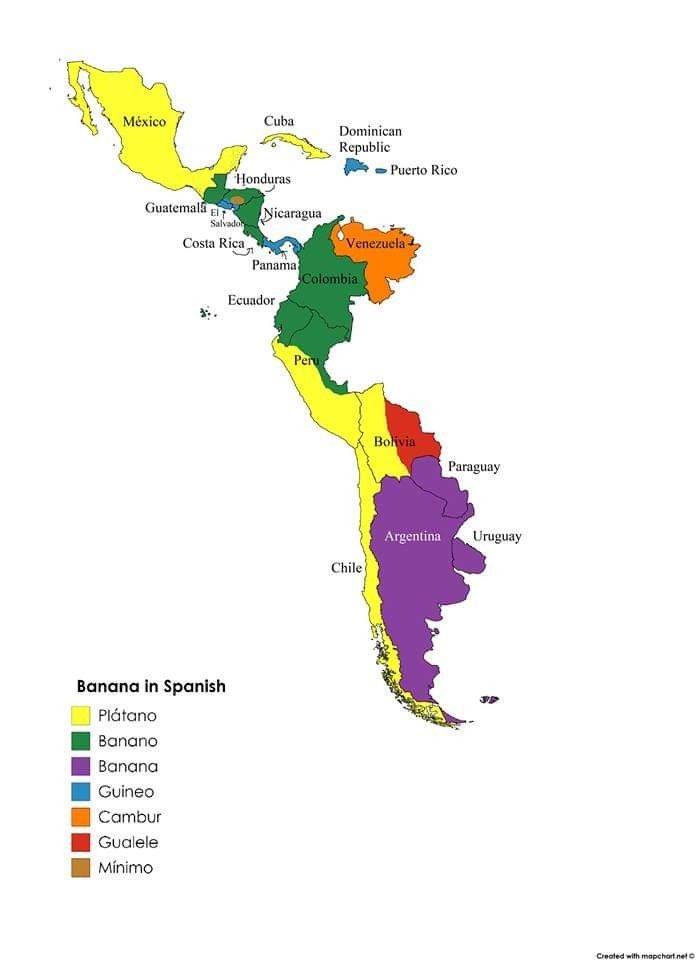 The easternmost island of the Greater Antilles chain, it lies approximately 50 miles (80 km) east of the Dominican Republic, 40 miles (65 km) west of the Virgin Islands, and 1,000 miles (1,600 km) southeast of the U.S. state of Florida. It is situated in the northeastern Caribbean Sea, its northern shore facing the Atlantic Ocean. Two small islands off the east coast, Vieques and Culebra, are administratively parts of Puerto Rico, as is Mona Island to the west. Compared with its Greater Antillean neighbours, Puerto Rico is one-fifth as large as the Dominican Republic, one-third the size of Haiti, and slightly smaller than Jamaica. It is roughly rectangular in shape, extending up to 111 miles (179 km) from east to west and 39 miles (63 km) from north to south. The capital is San Juan.
The easternmost island of the Greater Antilles chain, it lies approximately 50 miles (80 km) east of the Dominican Republic, 40 miles (65 km) west of the Virgin Islands, and 1,000 miles (1,600 km) southeast of the U.S. state of Florida. It is situated in the northeastern Caribbean Sea, its northern shore facing the Atlantic Ocean. Two small islands off the east coast, Vieques and Culebra, are administratively parts of Puerto Rico, as is Mona Island to the west. Compared with its Greater Antillean neighbours, Puerto Rico is one-fifth as large as the Dominican Republic, one-third the size of Haiti, and slightly smaller than Jamaica. It is roughly rectangular in shape, extending up to 111 miles (179 km) from east to west and 39 miles (63 km) from north to south. The capital is San Juan.
Puerto Ricans, or puertorriqueños, have an intermingled Spanish, U.S., and Afro-Caribbean culture. The island’s social and economic conditions are generally advanced by Latin American standards, partly because of its ties with the United States (including the presence of U. S.-owned manufacturing plants and military bases in the commonwealth). Although that relationship has become politically controversial, the vast majority of Puerto Rican voters have continued to favour permanent union with the United States, with a slightly greater number favouring the current commonwealth relationship rather than statehood. A small but persistent minority has advocated independence.
S.-owned manufacturing plants and military bases in the commonwealth). Although that relationship has become politically controversial, the vast majority of Puerto Rican voters have continued to favour permanent union with the United States, with a slightly greater number favouring the current commonwealth relationship rather than statehood. A small but persistent minority has advocated independence.
The land
Relief
Puerto Rico is largely composed of mountainous and hilly terrain, with nearly one-fourth of the island covered by steep slopes. The mountains are the easternmost extension of a tightly folded and faulted ridge that extends from the Central American mainland across the northern Caribbean to the Lesser Antilles. Although Puerto Rican relief is relatively low by continental standards, the island sits less than 100 miles (160 km) south of a precipitous depression in Earth’s crust: an extensive submarine feature of the Atlantic known as the Puerto Rico Trench, which descends to more than 5 miles (8 km) below sea level—the Atlantic’s deepest point—at a site northeast of the Dominican Republic.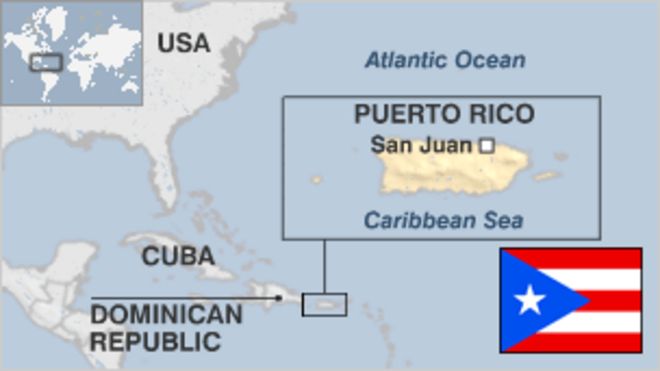 Powerful tectonic forces that over millions of years have created these features still occasionally cause earthquakes in Puerto Rico.
Powerful tectonic forces that over millions of years have created these features still occasionally cause earthquakes in Puerto Rico.
The island’s highest mountain range, the Cordillera Central, trends east-west and exceeds 3,000 feet (900 metres) in many areas; its slopes are somewhat gentle in the north but rise sharply from the south coast to the loftier peaks, topped at about 4,390 feet (1,338 metres) by Cerro de Punta, the highest point on the island. Near the island’s eastern tip, the partly isolated Sierra de Luquillo rises to 3,494 feet (1,065 metres) at El Yunque Peak.
The northwestern foothills and lowlands are characterized by karst features, including sinkholes (sumideros), caverns, and eroded mogotes, or haystack hills (pepinos). There is a continuous but narrow lowland along the north coast, where most people live, and smaller bands along the south and west coasts that also include densely populated areas. The Caguas Basin, in the Grande de Loíza River valley south of San Juan, is the largest of several basins in the mountains that provide level land for settlements and agriculture. The islands of Mona, Vieques, and Culebra are generally hilly but ringed by narrow coastal plains; Vieques rises to 988 feet (301 metres) at Mount Pirata.
The islands of Mona, Vieques, and Culebra are generally hilly but ringed by narrow coastal plains; Vieques rises to 988 feet (301 metres) at Mount Pirata.
Drainage and soils
None of Puerto Rico’s rivers is large enough for navigation, but several northward-flowing rivers are harnessed for municipal water supplies, irrigation, and hydroelectricity, and along the south coast irrigation is essential for agriculture. Puerto Rico’s precipitation mainly falls on the north-facing mountain slopes, so that most of the permanent rivers flow from the interior to the north and west coasts, including the Grande de Loíza, Grande de Arecibo, and Grande de Añasco rivers—all of which are some 40 miles (65 km) long—and La Plata, which extends 46 miles (75 km). The river courses on the south coast are dry most of the year, carrying water only after rainfall. Pockets of alluvial soils on the south coast are somewhat fertile, but all farmlands there are fertilized. Many formerly cultivated and eroded areas in the mountains have been set aside as forest preserves.
Get a Britannica Premium subscription and gain access to exclusive content.
Subscribe Now
Climate
Puerto Rico has a tropical climate with little seasonal variation, although local conditions vary according to elevation and exposure to rain-bearing winds. Northeast trade winds bring heavy rainfall to the north coast, while the south coast is in a rain shadow. San Juan receives about 60 inches (1,525 mm) of precipitation per year, whereas El Yunque Peak farther east receives 180 inches (4,570 mm), and Ponce on the south coast receives only 36 inches (914 mm). Rain falls each month of the year, but the heaviest precipitation occurs between May and December. The average daily temperature in the lowlands is about 78 °F (26 °C), but relatively high humidity makes daytime temperatures feel warmer. Highland temperatures average a few degrees lower. Hurricanes develop in the region between June and November and occasionally traverse the island, including a storm in 1899 that killed about 3,000 Puerto Ricans; other devastating but less lethal hurricanes occurred in 1928, 1932, 1956, 1989, 1998, and 2017.
Plant and animal life
Plant life is abundant and varied. Tropical rainforests cover parts of the north side of the island, and thorn and scrub vegetation predominates on the drier south side. Most of the island’s original vegetation was removed through centuries of agricultural exploitation, particularly during the first two decades of the 20th century, when farm settlers and plantation workers destroyed large tracts of coastal forest and used the lumber for railroad ties and fuel. Although some woodlands have been replanted since the mid-20th century, introduced varieties of trees, shrubs, and grasses now predominate.
The scarlet- and orange-flowered royal poinciana, or flamboyant (Delonix regia), and the African tulip tree (Spathodea campanulata) are among the flowering trees that dot the mountains with patches of vivid colour against a lush green background. The Caribbean National Forest in the Sierra de Luquillo southeast of San Juan preserves rare species of orchids and the small green Puerto Rican parrot, an endangered species.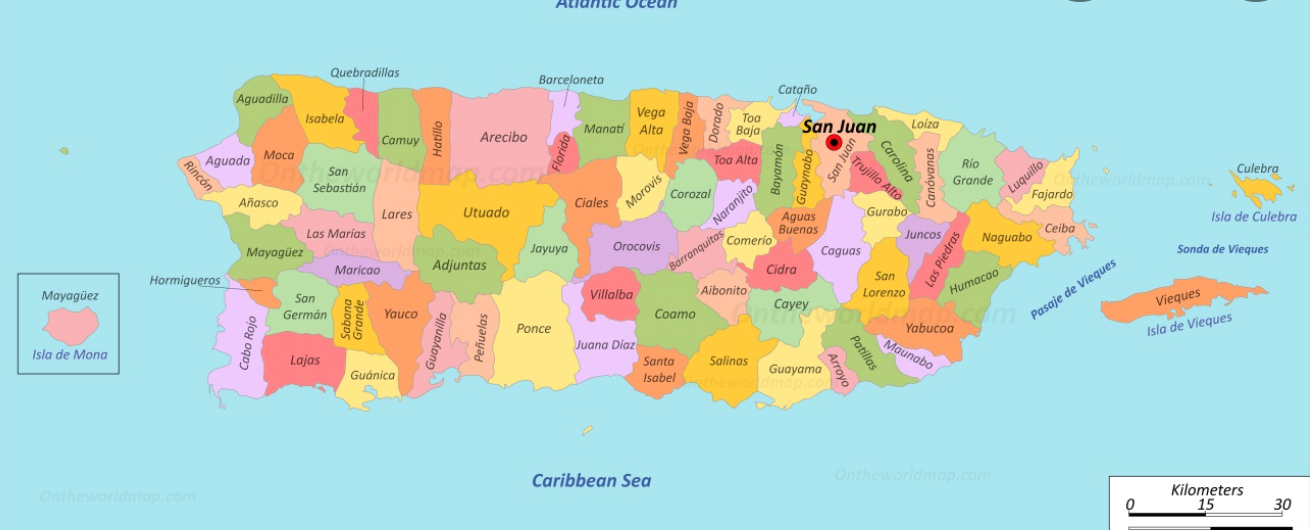 Puerto Rico has more than 200 species of birds, but land animals are mostly confined to nonpoisonous snakes, lizards, mongooses, and the coquí (Eleutherodactylus portoricensis), a frog whose name is onomatopoeic with its call (“co-kee!”) and which has become a kind of national mascot. Numerous varieties of fish abound in the surrounding waters, but edible and inedible species mingle together, limiting commercial fishing there.
Puerto Rico has more than 200 species of birds, but land animals are mostly confined to nonpoisonous snakes, lizards, mongooses, and the coquí (Eleutherodactylus portoricensis), a frog whose name is onomatopoeic with its call (“co-kee!”) and which has become a kind of national mascot. Numerous varieties of fish abound in the surrounding waters, but edible and inedible species mingle together, limiting commercial fishing there.
Citizenship through leave for Russians
Contents
- Heavenly place where Russians are expected
- How friendly is the Dominican Republic towards new arrivals from Russia?
- Low real estate prices in the Dominican Republic – a temporary phenomenon!
- There is a possibility of imposing sanctions
- Faster and 100% proven alternatives for Russians
- Help for those who wish to obtain citizenship through vacation
In the spring of 2022, the term “doomscrolling”, meaning a depressing “immersion” in a news feed filled with negativity.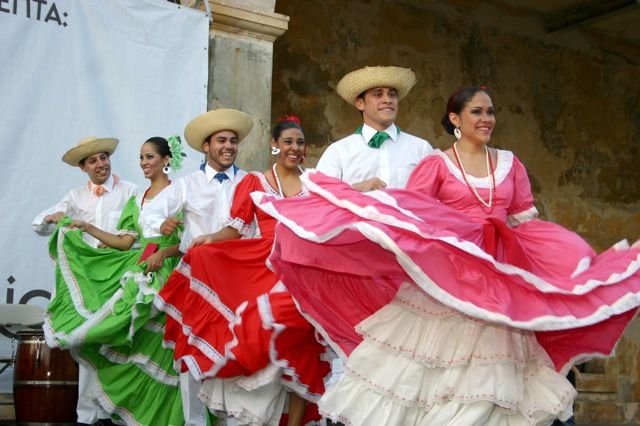 The reason is obvious: the events in Ukraine and their consequences for both Ukrainians and Russians. Isn’t it time to change the situation and have a proper rest, simultaneously creating a “reserve airfield”? This article will tell you how to get citizenship through vacation!
The reason is obvious: the events in Ukraine and their consequences for both Ukrainians and Russians. Isn’t it time to change the situation and have a proper rest, simultaneously creating a “reserve airfield”? This article will tell you how to get citizenship through vacation!
A heavenly place where the Russians are waiting
December 5, 1492, during his first voyage in search of India, the eminent navigator Christopher Columbus landed on Hispaniola: an island whose territory today belongs to the Dominican Republic and Haiti. Upon arrival, the explorer allegedly declared the island “the most beautiful land that human eyes have ever seen.” Another source gives a different description of Hispaniola. Columbus allegedly called this place “the most beautiful land under heaven.”
Such an opinion is difficult to dispute. The Dominican Republic (not to be confused with another Caribbean island called Dominica, where foreigners are offered the cheapest citizenship by investment for a bachelor) boasts a beautiful coastline that includes some of the most highly rated beaches in the world.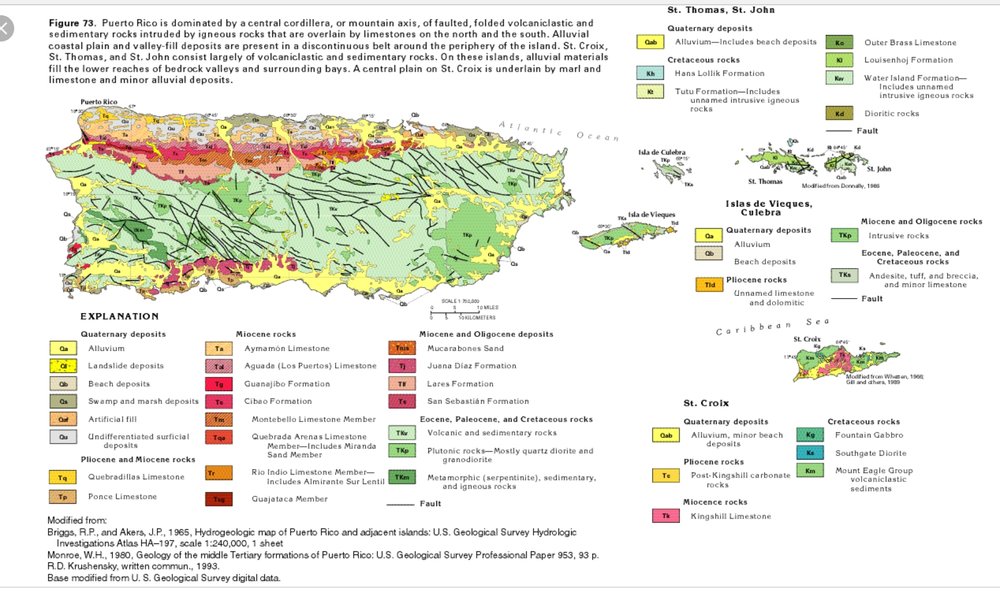
Perfect beaches, perfect for postcard backdrops, are hardly unusual in the Caribbean today. But a number of unique features of the Dominican Republic make moving to this state an interesting option for Russians who are looking for a plan “B” / “alternate airfield”. Here are the key benefits:
- Inexpensive : Dominican vacations/long-term stays are inexpensive, as evidenced by multiple cost-of-living indices/other case studies. For comparison, the cost of living in neighboring Puerto Rico is at least 50% higher. The low cost of goods and services is a remarkably rare advantage in the Caribbean. Many Caribbean island nations have imposed outrageously high import duties, driving up the cost of consumer goods. Cheapness is also not facilitated by complex logistics, given the need to import numerous products. As a result, the cost of living in many Caribbean islands is quite high. But the Dominican Republic is one of the rare exceptions!
- Taxes : An additional unique feature of the Dominican Republic is the territorial tax system.
 Even if an expat ends up choosing to reside in a Caribbean country for most of the year, they will only be responsible for taxing income generated within the host country. For example, pay personal income tax on salaries received from a local employer. Owning and operating a business in the metropolitan city of Santo Domingo will also have to pay income to the local treasury. But income from cryptocurrency operations/ownership of a company doing business outside the Dominican Republic is generally not subject to income tax in the host Caribbean jurisdiction. The portal team is ready to help with registering a company in the Dominican Republic, opening a bank account, and registering with the tax authorities.
Even if an expat ends up choosing to reside in a Caribbean country for most of the year, they will only be responsible for taxing income generated within the host country. For example, pay personal income tax on salaries received from a local employer. Owning and operating a business in the metropolitan city of Santo Domingo will also have to pay income to the local treasury. But income from cryptocurrency operations/ownership of a company doing business outside the Dominican Republic is generally not subject to income tax in the host Caribbean jurisdiction. The portal team is ready to help with registering a company in the Dominican Republic, opening a bank account, and registering with the tax authorities. - Citizenship through leave : The third bonus is the most interesting for many expats. The most important key feature of the Dominican Republic as a destination for relocation is the extremely flexible requirements for applicants for residency, regulated by local immigration law.
 A Russian citizen has the right to apply for permanent residence, having previously issued a residence permit for a pensioner (Pensionado) / rentier (Rentista), by demonstrating a pension / passive income of at least $ 1,500 / $ 2,000, respectively. The beneficiary does not have to constantly stay in the host country to extend the permanent residence – a single visit to the Dominican Republic annually is enough. For example, for a comfortable vacation in a paradise Caribbean resort. After maintaining resident status for two years, periodically visiting the country for vacations, an expat becomes eligible to apply for citizenship through naturalization. In fairness, it should be noted that the process of considering an application for citizenship is quite lengthy. In practice, a foreigner is able to become a naturalized citizen after about four to five years of maintaining residency in the Dominican Republic.
A Russian citizen has the right to apply for permanent residence, having previously issued a residence permit for a pensioner (Pensionado) / rentier (Rentista), by demonstrating a pension / passive income of at least $ 1,500 / $ 2,000, respectively. The beneficiary does not have to constantly stay in the host country to extend the permanent residence – a single visit to the Dominican Republic annually is enough. For example, for a comfortable vacation in a paradise Caribbean resort. After maintaining resident status for two years, periodically visiting the country for vacations, an expat becomes eligible to apply for citizenship through naturalization. In fairness, it should be noted that the process of considering an application for citizenship is quite lengthy. In practice, a foreigner is able to become a naturalized citizen after about four to five years of maintaining residency in the Dominican Republic.
Please note that the value of a Dominican Republic passport is currently quite low. The document does not provide visa-free travel to the US, Canada, Australia, Schengen, or the UK. Visa-free destinations are marked in dark green in the image below. But it is quite possible that the value of the passport of an island state will increase in the future (usually, the list of visa-free destinations available to citizens of a certain state increases with overall economic growth and the success of local diplomacy).
The document does not provide visa-free travel to the US, Canada, Australia, Schengen, or the UK. Visa-free destinations are marked in dark green in the image below. But it is quite possible that the value of the passport of an island state will increase in the future (usually, the list of visa-free destinations available to citizens of a certain state increases with overall economic growth and the success of local diplomacy).
A second passport and citizenship through a holiday in the Dominican Republic may well prove to be the best option for Russians aiming to create their own Plan B. But potential applicants, of course, should not ignore the negative aspects of the immigration process. Learn more by consulting with our experts!
How friendly is the Dominican Republic towards newcomers from Russia?
To take the first step on the path from residency to citizenship through a vacation in the Dominican Republic, Russians do not have to make serious investments in the economy of their potential new homeland. But experts recommend buying real estate for rent, living in the corresponding villa / apartment only during the next vacation.
But experts recommend buying real estate for rent, living in the corresponding villa / apartment only during the next vacation.
In this context, it should be noted that the Dominican government did not impose sanctions on the Russian Federation after the events in Ukraine that unfolded in the spring of 2022. Therefore, the Caribbean jurisdiction is not included in the list of unfriendly countries compiled by official Moscow, and citizens of the Russian Federation have the right to invest money in the local economy without limits.
Low real estate prices in the Dominican Republic – a temporary phenomenon!
Property prices in the Dominican Republic are among the lowest in the Caribbean. However, one should not associate low prices with insufficiently high quality development work. There are no problems with the latter in this jurisdiction. But low prices will not last forever!
According to the statistics of the Dominican Association of Home Builders and Promoters (Asociación Dominicana de Constructores y Promotores de la Viviend; Acoprovi), the cost of a “square” construction of residential real estate in the Caribbean jurisdiction as of March 2022 ranged from 27 thousand reais per square meter in economy -segment and from 40 thousand reais per square meter in the middle price segment.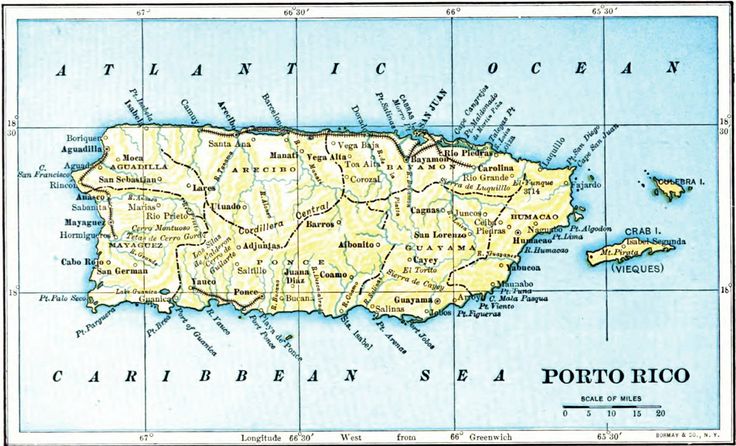 The indicator varied widely depending on the type of housing and the level of its readiness.
The indicator varied widely depending on the type of housing and the level of its readiness.
However, developers’ costs are rising rapidly due to higher prices for steel, cement and other building materials. Additional price increases are facilitated by delays in shipping and the tax burden on developers.
Market experts note that islanders and foreign investors are now showing an inclination to buy apartments and villas in Santo Domingo to rent out through the Airbnb platform, realizing the capital’s growing attractiveness as a tourist destination. Similar trends are observed in the case of demand for villas and apartments located in the tourist areas of Punta Cana and La Romana. The increase in effective demand results in an increase in prices.
There is a possibility of imposition of sanctions
There is an additional reason to hurry with the purchase of Caribbean real estate and residency. When planning to apply for citizenship through a vacation in the Dominican Republic, Russians should take into account the risk of sanctions.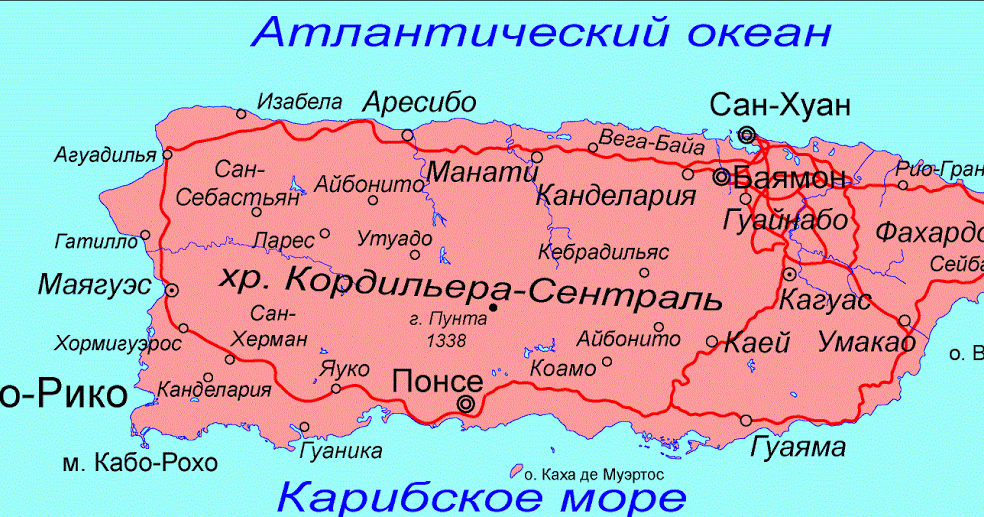
In early March 2022, Russia’s actions in Ukraine were condemned by the governments of several Latin American countries, including Argentina, Chile, Colombia, Costa Rica, Ecuador, Guatemala, Uruguay and the Dominican Republic. But the imposition of sanctions against Russia, Russian organizations and Russian individuals did not follow.
Experts do not rule out the possibility of imposing sanctions restrictions on the Russian Federation by Latin American countries, which previously condemned Russia, if the situation in Ukraine continues to deteriorate. In such a case, moving to the Dominican Republic, investing in this jurisdiction and performing administrative procedures in local institutions by Russians will become significantly more complicated / impossible. Hence, the experts recommend to hurry up!
Is it true that you can get a second citizenship through a vacation in the Dominican Republic?
Yes. The applicant is required to obtain residency on a specific basis (for example, as a rentier / recipient of retirement income) and periodically visit the potential new home, spending holidays there and renewing the resident card. De jure, applying for citizenship through leave is allowed after 2 years of naturalization. But in fact, the process takes 4-5 years.
De jure, applying for citizenship through leave is allowed after 2 years of naturalization. But in fact, the process takes 4-5 years.
Are there easier and faster ways to expand the passport collection?
Yes, economic citizenship programs around the world can speed up and simplify the process of expanding your passport collection. For example, in the Caribbean, which also offers very comfortable conditions for a vacation. But it is important to consider the country of origin of each individual applicant. So, the same Caribbean from the spring of 2022 does not serve Russians for technical reasons. Citizens of the Russian Federation are currently available 2 alternatives: the Republic of Vanuatu in the South Pacific region and hospitable Turkey.
Who will help you get a second citizenship through a vacation?
Readers interested in obtaining foreign citizenship through leave in the shortest possible time / without burdensome bureaucracy and overpayments should contact our team for help. Portal experts will help you achieve what you want by assisting at all stages of the process!
Portal experts will help you achieve what you want by assisting at all stages of the process!
Faster and 100% proven alternatives for Russians
Of course, there are other ways to replenish the passport collection. For example, issuance of a foreign identity document based on origin / special merit to the new homeland / through programs for the issuance of economic citizenship for investment.
In the latter case, the process is as quick and easy as possible. Moreover, the opportunity to issue a second passport to foreign investors is offered by numerous resort countries. But due to sanctions, only 2 ways are available to Russians to obtain economic citizenship through vacation:
- Beneficial citizenship through vacation in Turkey for economic citizenship through vacation, having made a single visit to Turkey to complete the formalities and have a comfortable stay. The process takes from a quarter to half a year. It is important to take into account the opportunity to buy the most liquid asset and start renting out the acquired property immediately after the purchase.
 Exit from the investment is possible after a 3-year period.
Exit from the investment is possible after a 3-year period. - Record-breakingly fast and easy second citizenship via vacation in Vanuatu : Visiting the host state, issuing a local passport for a gratuitous donation of $ 145,000, is not required: the process is carried out 100% remotely and lasts from one and a half to two months. But it is worth visiting the new homeland, given the long beaches and magnificent landscapes! Why not invest in Vanuatu citizenship through a vacation!
Yes, there are other investment immigration options still available to Russians. But the risks are too great. So, after the events in Ukraine, the Greek government refused to renew the golden visas already issued to Russians (residence permit through investment), depriving conscientious citizens of the Russian Federation of the right to apply for Greek citizenship and a second passport of an EU member state after 7 years of naturalization.
Help for those wishing to obtain citizenship through vacation
Highly qualified experts who are part of our team are ready to help readers, including Russians, Ukrainians and Belarusians with the most profitable, easy and fast registration of citizenship through vacation.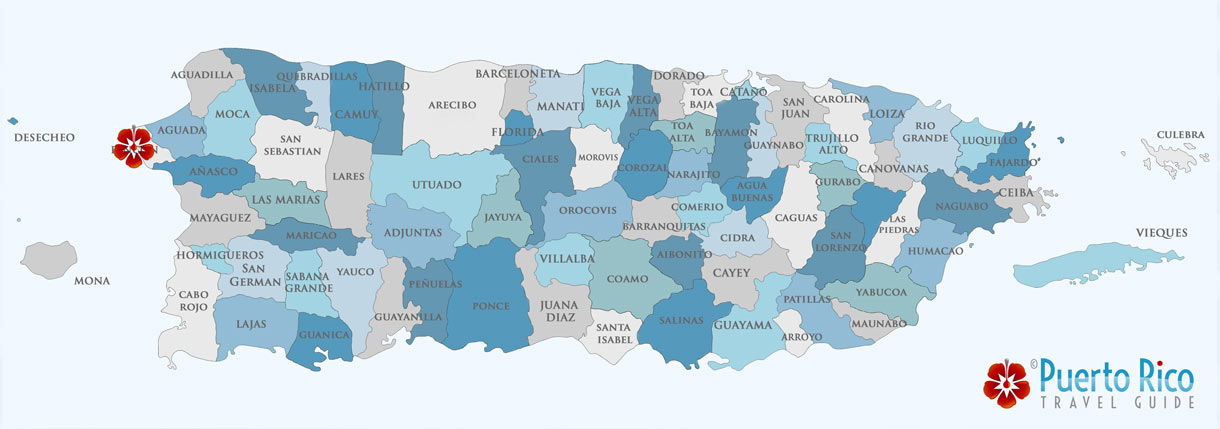
Based on extensive experience and a global partner network, the portal team will gladly provide professional support at all stages of the process: from choosing the optimal investment immigration scheme that meets your wishes and possibilities, to completing all the necessary administrative procedures and obtaining a second passport!
You can contact the experts of the portal for an introductory individual consultation right now and completely free of charge! Just use the feedback form / one of the phone numbers listed above!
Citizenship and residency by investment
The Firm of Global Citizens®
Henley & Partners is an international leader in investment immigration. The company advises private clients on residency planning, second citizenship and residency through formal government investment programs.
Henley & Partners provides services not only in the country of permanent residence of the client, but also in the chosen country of alternative residence. The company’s offices are located in 35 countries around the world.
The company’s offices are located in 35 countries around the world.
Henley & Partners also acts as an advisor to governments around the world in the development and implementation of citizenship by investment and residency programs. The company has attracted USD 10 billion in foreign direct investment in the economies of the countries, and has also participated in the development and implementation of some of the most successful investment programs in the world.
About company
Why Henley & Partners
Henley & Partners is the world’s largest citizenship and residency planning consultancy. The company, with over 25 years of experience, has helped thousands of private clients and their advisors with residency planning, obtaining a second citizenship or residence permit through official government investment programs. In addition to individuals, the company works with governments of different countries to create, implement and promote investment programs for granting citizenship or residence permits. The principles of the company’s work are based on strict confidentiality, security of data and financial transactions.
The principles of the company’s work are based on strict confidentiality, security of data and financial transactions.
Your journey with Henley & Partners
one.
We will help you choose a program for you and your family
Our experienced consultants will study your tasks and select options for obtaining citizenship or residence permit through investment. The first consultation with a specialist of the company is free.
2.
You will become a Henley & Partners customer
Our compliance team will perform an internal due diligence for you and the family members included in the application.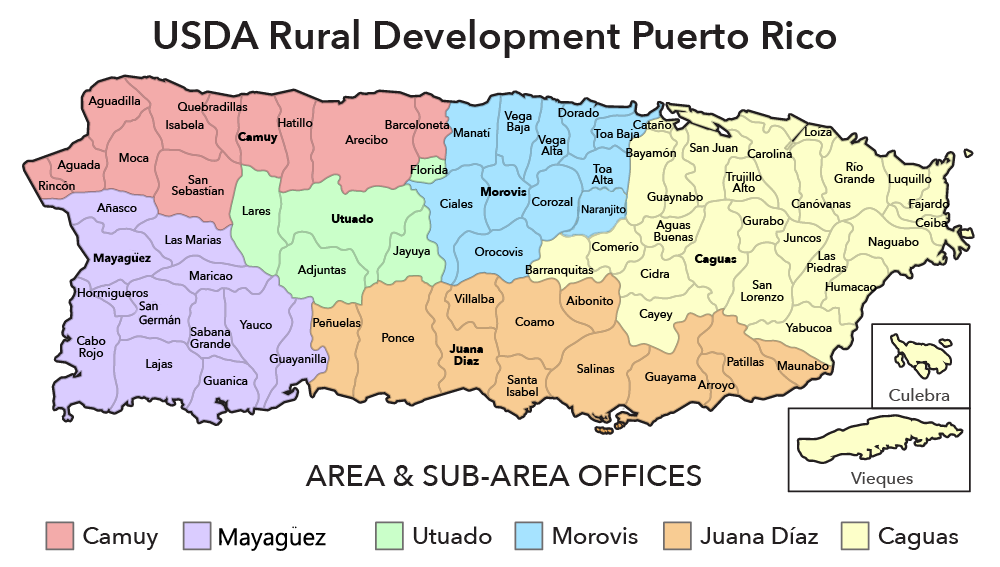 As soon as the verification is successfully completed, we will sign a client agreement and issue an invoice for the services.
As soon as the verification is successfully completed, we will sign a client agreement and issue an invoice for the services.
3.
We will accompany the entire process from start to finish
A personal manager will accompany the entire process of preparing and submitting an application. We will provide support in the collection, completion and submission of documents until the final decision.
four.
You will receive a new citizenship or residency
Governments conduct their due diligence. If your application is successful, you will receive formal approval in principle. Next, you need to fulfill the investment requirements of the chosen program.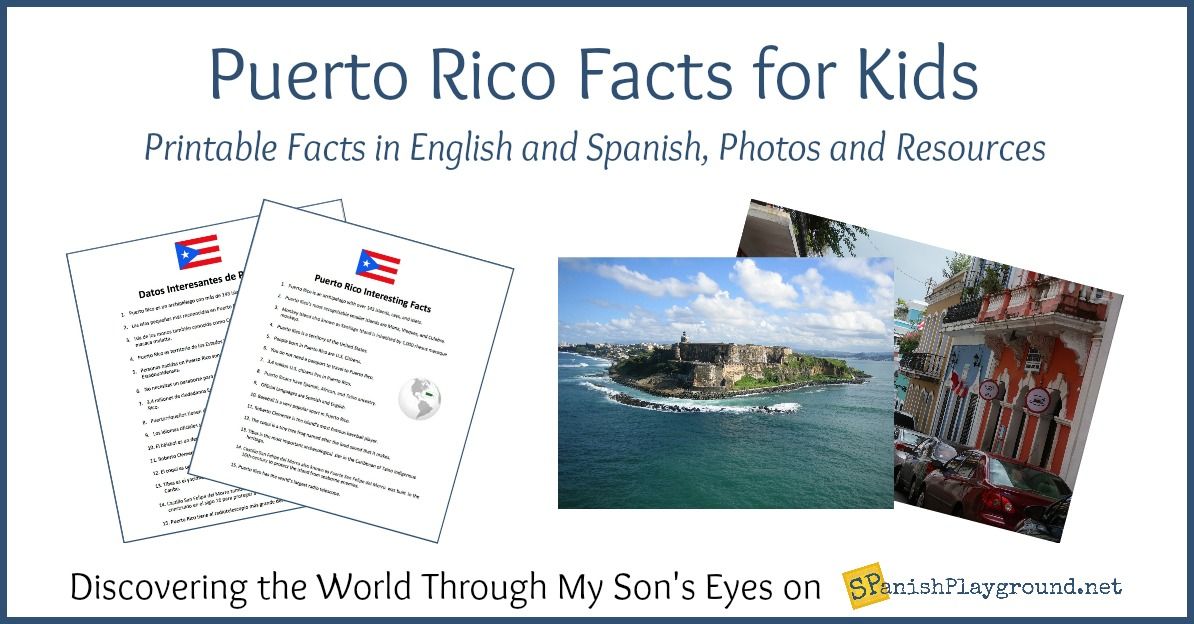 Only after that the government will issue citizenship or residency documents.
Only after that the government will issue citizenship or residency documents.
5.
We will support after receiving the documents
We are ready to provide any assistance, if necessary, after obtaining a passport or residence permit. For example, we will fill out and submit an annual declaration, assist in the renewal of a residence permit or passport, add new family members to approved applications, and much more.
Specialized Services
Private Client Services
For 25 years, Henley & Partners has been advising private clients on residency planning, residency and citizenship through government investment programs. The company’s software portfolio is the widest on the market. We work directly with governments, so we provide our clients with the maximum choice.
 Even if an expat ends up choosing to reside in a Caribbean country for most of the year, they will only be responsible for taxing income generated within the host country. For example, pay personal income tax on salaries received from a local employer. Owning and operating a business in the metropolitan city of Santo Domingo will also have to pay income to the local treasury. But income from cryptocurrency operations/ownership of a company doing business outside the Dominican Republic is generally not subject to income tax in the host Caribbean jurisdiction. The portal team is ready to help with registering a company in the Dominican Republic, opening a bank account, and registering with the tax authorities.
Even if an expat ends up choosing to reside in a Caribbean country for most of the year, they will only be responsible for taxing income generated within the host country. For example, pay personal income tax on salaries received from a local employer. Owning and operating a business in the metropolitan city of Santo Domingo will also have to pay income to the local treasury. But income from cryptocurrency operations/ownership of a company doing business outside the Dominican Republic is generally not subject to income tax in the host Caribbean jurisdiction. The portal team is ready to help with registering a company in the Dominican Republic, opening a bank account, and registering with the tax authorities. A Russian citizen has the right to apply for permanent residence, having previously issued a residence permit for a pensioner (Pensionado) / rentier (Rentista), by demonstrating a pension / passive income of at least $ 1,500 / $ 2,000, respectively. The beneficiary does not have to constantly stay in the host country to extend the permanent residence – a single visit to the Dominican Republic annually is enough. For example, for a comfortable vacation in a paradise Caribbean resort. After maintaining resident status for two years, periodically visiting the country for vacations, an expat becomes eligible to apply for citizenship through naturalization. In fairness, it should be noted that the process of considering an application for citizenship is quite lengthy. In practice, a foreigner is able to become a naturalized citizen after about four to five years of maintaining residency in the Dominican Republic.
A Russian citizen has the right to apply for permanent residence, having previously issued a residence permit for a pensioner (Pensionado) / rentier (Rentista), by demonstrating a pension / passive income of at least $ 1,500 / $ 2,000, respectively. The beneficiary does not have to constantly stay in the host country to extend the permanent residence – a single visit to the Dominican Republic annually is enough. For example, for a comfortable vacation in a paradise Caribbean resort. After maintaining resident status for two years, periodically visiting the country for vacations, an expat becomes eligible to apply for citizenship through naturalization. In fairness, it should be noted that the process of considering an application for citizenship is quite lengthy. In practice, a foreigner is able to become a naturalized citizen after about four to five years of maintaining residency in the Dominican Republic. Exit from the investment is possible after a 3-year period.
Exit from the investment is possible after a 3-year period.